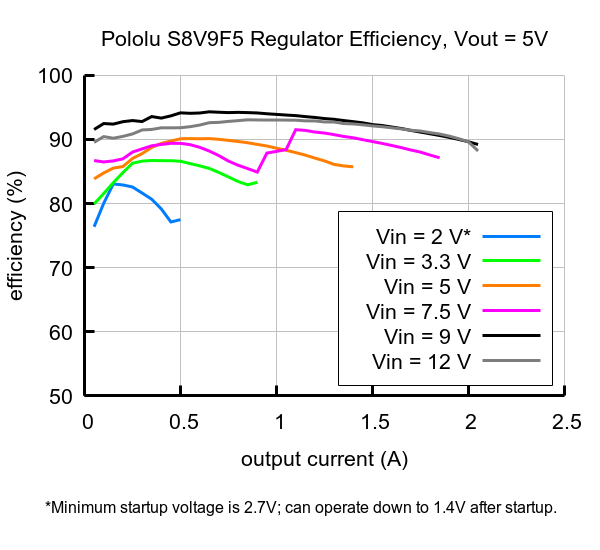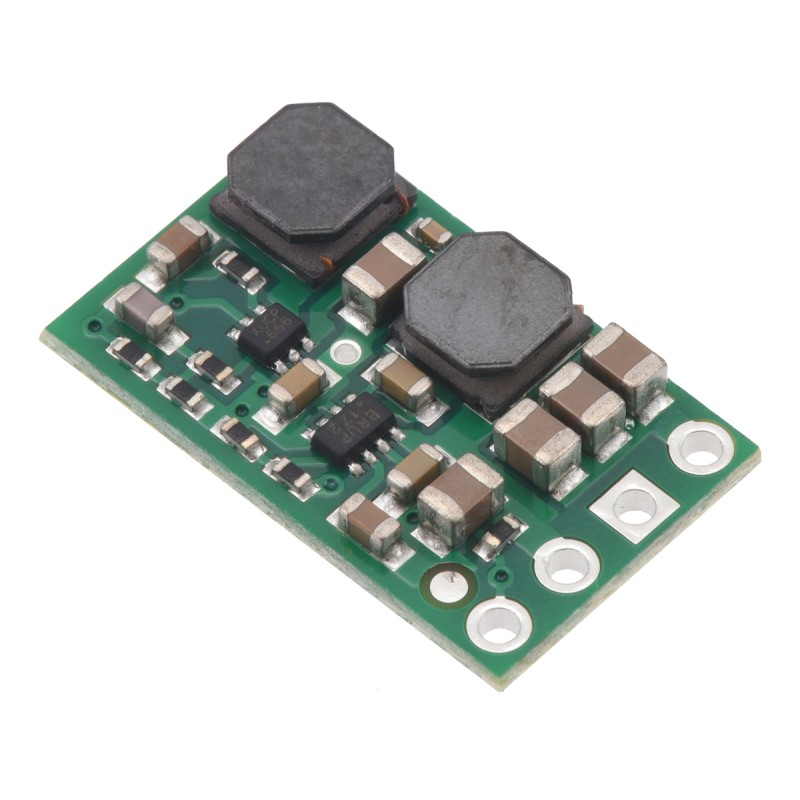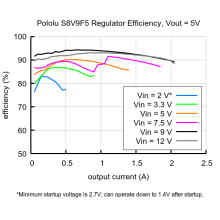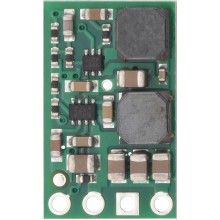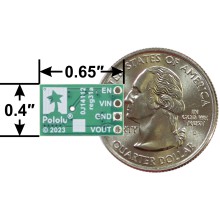The S8V9Fx family of efficient switching regulators (also called switched-mode power supplies (SMPS) or DC-to-DC converters) convert both higher and lower input voltages to a regulated output voltage. They take input voltages from 1.4 V to 16 V and increase or decrease them as necessary, offering typical efficiencies of 80% to 90% and typical continuous output currents over 1 A for input voltages close to the output voltage. (Note: The minimum start-up voltage is 2.7 V; see the connections section for details.)
The flexibility in input voltage offered by this family of regulators is especially well-suited for battery-powered applications in which the battery voltage begins above the regulated voltage and drops below as the battery discharges. Without the typical restriction on the battery voltage staying above the required voltage throughout its life, new battery packs and form factors can be considered.
The S8V9Fx regulators have under-voltage lockout and over-current protection. A thermal shutdown feature also helps prevent damage from overheating and a soft-start feature limits the inrush current and gradually ramps the output voltage on startup.
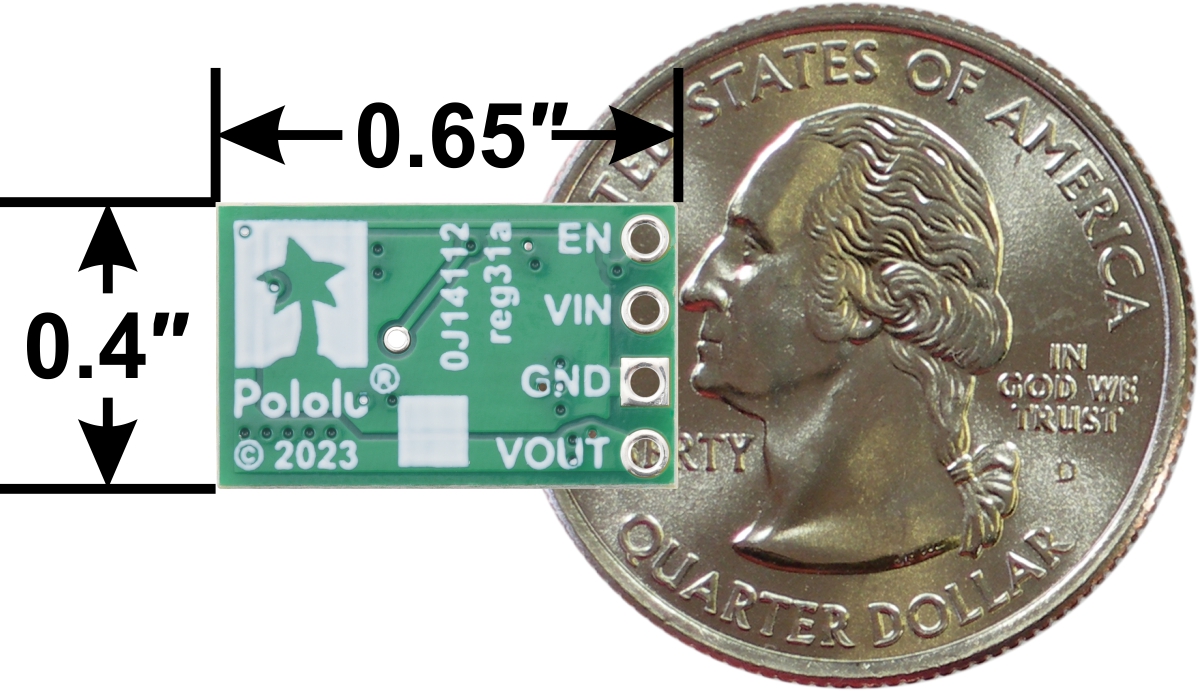
This family consists of five regulators with output voltages ranging from 3.3 V to 9 V:
- S8V9F3: 3.3V output
- S8V9F5: 5V output
- S8V9F6: 6V output
- S8V9F7: 7.5V output
- S8V9F9: 9V output
Features
- Input voltage: 1.4 V to 16 V (Note: minimum start-up voltage is 2.7 V)
- Output voltage: 9 V with 4% accuracy
- Typical maximum continuous output current: 1 A when input voltage is close to the output voltage (see the maximum continuous output current graph below for current capabilities across the full input voltage range)
- Typical efficiency of 80% to 90%, depending on input voltage and load (see the efficiency graph below)
- Under 6 mA typical no-load quiescent current (see the quiescent current graph below); can be reduced to 10 µA to 15 µA per volt on VIN by disabling the board
- Soft-start feature limits inrush current and gradually ramps output voltage
- Over-current protection and over-temperature shutoff
- Input under-voltage lockout
- Power-saving feature maintains high efficiency at low currents
- Compact size: 0.4″ × 0.65″ × 0.1″ (10.2 mm × 16.5 mm × 2.6 mm); see the dimension diagram (719k pdf) for more information
Using the Regulator
Connections
The step-up/step-down regulator has four main connections: the output voltage (VOUT), ground (GND), the input voltage (VIN), and an enable input (EN).
The different versions of the S8V9Fx regulators all look very similar, so the bottom silkscreen includes a blank space where you can add your own distinguishing marks or labels.
VOUT is the regulated output voltage. The regulator’s soft-start feature gradually ramps up the VOUT voltage on start-up to limit in-rush current draw.
The input voltage, VIN, should be between 2.7 V and 16 V when the regulator is first powered. After the regulator is running, it can continue operating down to 1.4 V. Lower inputs can shut down the voltage regulator; higher inputs can destroy the regulator, so you should ensure that noise on your input is not excessive, and you should be wary of destructive LC spikes (see the LC voltage spike section below for more information).
The regulator, which is enabled by default, can be put into a low-power sleep state by bringing the EN pin low (under 1 V). Leaving the pin disconnected or bringing the pin above 1.3 V will enable the regulator. The quiescent current draw in sleep mode is dominated by the current in the 100 kΩ pull-up resistor from ENABLE to VIN, which altogether will be between 10 µA and 15 µA per volt on VIN.
